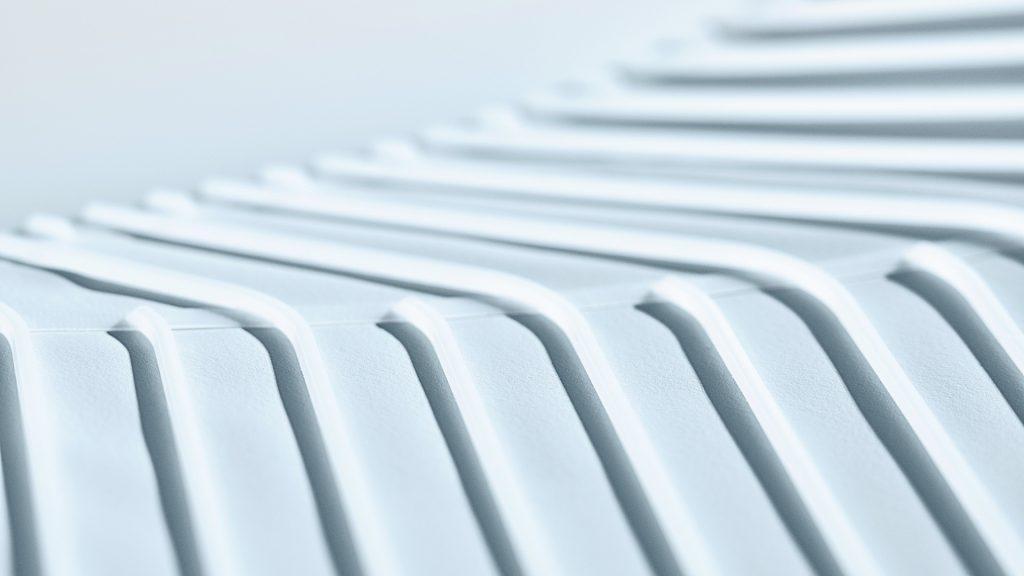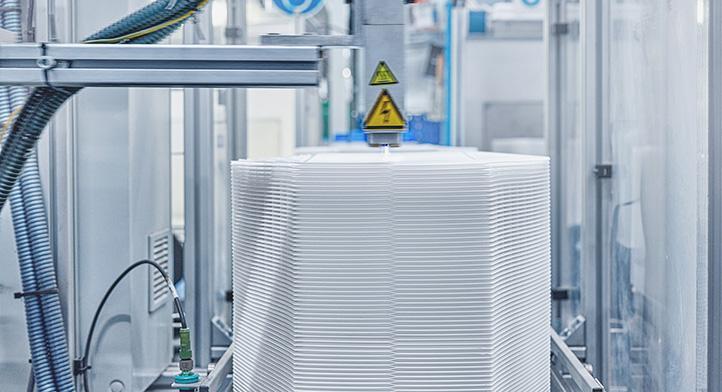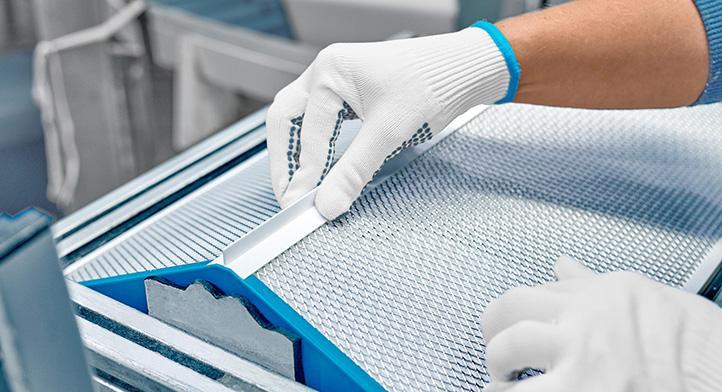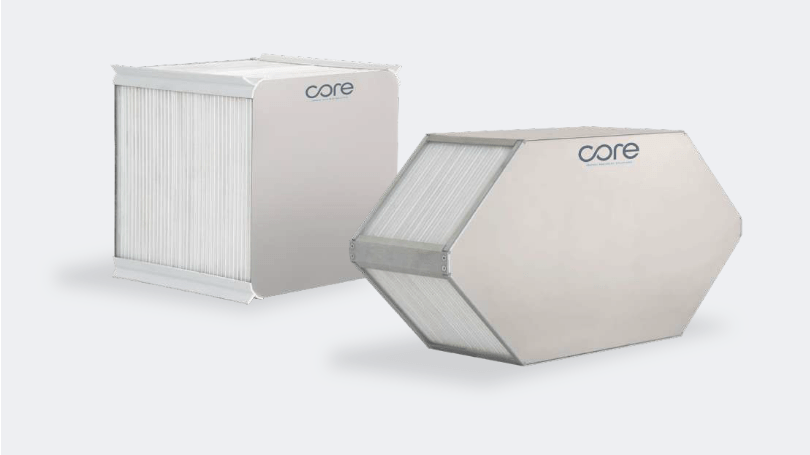THE MEMBRANE IN enthalpy exchangerS
Role and function of the membrane in enthalpy exchangers – in simple terms
Depending on the conditions and requirements, modern ventilation systems are not only equipped with heat exchangers but even with enthalpy exchangers. In addition to heat, they also transfer moisture. But an enthalpy exchanger is only as good as its membrane. Here we explain why the membrane is such a central component and how it works.
What is a membrane?

Someone who hears the word membrane often associates it with biology. Cell membranes are probably the best-known type of membrane. But they are just one example. In general, a membrane is a thin layer of a material that serves as a separation. Certain substances can pass through the membrane, but others cannot. In cells, the membrane controls which substances are transported into the cell and which are transported out. The same principle of permeability is used, for example, in medical technology or food technology – and also in CORE enthalpy exchangers.
Why is the membrane so important in enthalpy exchangers?

At the heart of the enthalpy exchanger is the membrane since the transfer of moisture to the incoming supply air is only possible thanks to this component. In heat exchangers, a wall separates the consumed exhaust air from the fresh supply air. This prevents any contact between the two airflows as this could lead to unwanted viruses, bacteria, mold spores, and contaminants being transferred with the desired heat energy. Enthalpy exchangers, however, need to be able to transfer moisture, which means that they require a different design for separation – one that still serves as a barrier against contaminants but allows for moisture to be transferred alongside heat. The membrane makes this possible.
How the membrane in enthalpy exchangers works

The membrane in enthalpy exchangers basically works in the same way as other separating membranes. Certain substances are allowed to pass through, others are not. The membrane in enthalpy exchangers is permeable for water vapor but not viruses, bacteria, etc. In this way, it enables the hygienic transfer of moisture. When warm air flows out, the moisture in the exhaust air condenses as water vapor on the membrane. It is then transferred through the membrane while viruses, bacteria and contaminants simply remain stuck on the outside. Subsequently, the water vapor is reabsorbed by the supply air on the other side of the membrane. Thus, moisture is led back into the building. This means that it is mainly its permeability that makes the membrane such an important component.

Someone who hears the word membrane often associates it with biology. Cell membranes are probably the best-known type of membrane. But they are just one example. In general, a membrane is a thin layer of a material that serves as a separation. Certain substances can pass through the membrane, but others cannot. In cells, the membrane controls which substances are transported into the cell and which are transported out. The same principle of permeability is used, for example, in medical technology or food technology – and also in CORE enthalpy exchangers.

At the heart of the enthalpy exchanger is the membrane since the transfer of moisture to the incoming supply air is only possible thanks to this component. In heat exchangers, a wall separates the consumed exhaust air from the fresh supply air. This prevents any contact between the two airflows as this could lead to unwanted viruses, bacteria, mold spores, and contaminants being transferred with the desired heat energy. Enthalpy exchangers, however, need to be able to transfer moisture, which means that they require a different design for separation – one that still serves as a barrier against contaminants but allows for moisture to be transferred alongside heat. The membrane makes this possible.

The membrane in enthalpy exchangers basically works in the same way as other separating membranes. Certain substances are allowed to pass through, others are not. The membrane in enthalpy exchangers is permeable for water vapor but not viruses, bacteria, etc. In this way, it enables the hygienic transfer of moisture. When warm air flows out, the moisture in the exhaust air condenses as water vapor on the membrane. It is then transferred through the membrane while viruses, bacteria and contaminants simply remain stuck on the outside. Subsequently, the water vapor is reabsorbed by the supply air on the other side of the membrane. Thus, moisture is led back into the building. This means that it is mainly its permeability that makes the membrane such an important component.
What makes the membrane of enthalpy exchangers from CORE so special?
In our enthalpy exchangers we use a specially developed polymer membrane. It has a big surface, which allows for an efficient and hygienic moisture exchange. In addition, the high-quality membrane has a very low thermal resistance. This means that in addition to moisture, an exceptionally large amount of heat is transferred from one airflow to the other. This makes the enthalpy exchanger extremely efficient.
In addition to their efficiency, our enthalpy exchangers also impress with their long life cycle and high frost and heat tolerance. This way, you benefit from fresh air and a pleasant indoor climate for as long as possible. Furthermore, our enthalpy exchangers are easy to use – allowing everyone to enjoy healthy air.
Additional topics
Counterflow heat exchanger vs. crossflow heat exchanger
What are the different types of heat exchangers? How do they work? And when is which technology suitable? We’ll explain all about the different types of heat exchangers.

All about enthalpy exchangers
What is meant by enthalpy? And what is the difference between a heat exchanger and an enthalpy exchanger? We explain the term and the differences between the two products.

Products and solutions
Wide variety of products, patented technology: With our wide-ranging portfolio of crossflow and counterflow heat exchangers, you will always find the right product for your application. And if needed, we can individually manufacture the right heat exchanger for your specific ventilation system.
